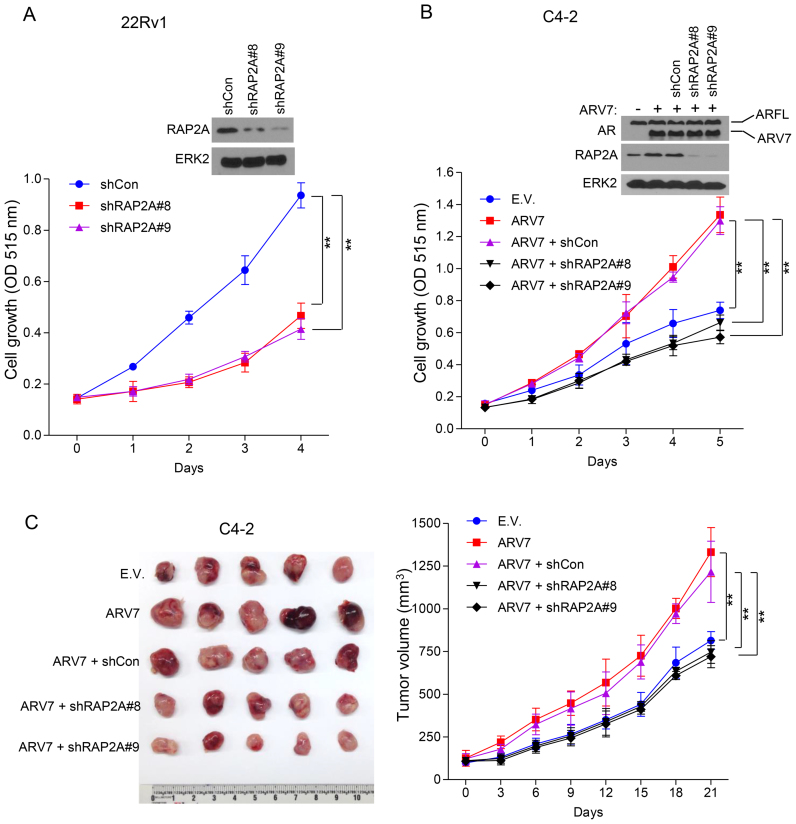Figure 7.
The role of the ARV7 target gene RAP2A in the growth of CRPC cells in vitro and in mice. (A) 22Rv1 cells were infected with control shRNA (shCon), RAP2A-specific shRNA (shRAP2A#8 and shRAP2A#9) lentivirus and then seeded into 96-well plates with 3000 cells/well. Cells were harvested 5 days after infection and subjected to western blot analysis (top). Cell proliferation was measured using SRB assay (means ± S.D.; n = 6) at the indicated time points (bottom). **P < 0.01; ERK2, a loading control. (B) C4–2 cells stably expressing control empty vector (E.V.) or ARV7 were infected with lentivirus expressing control (shCon) or RAP2A-specific shRNAs. Cells were seeded to 96-well plates with 3000 cells/well. Cells were harvested 5 days after infection and subjected to western blotg analysis (top). Cell proliferation was measured using SRB assay (means ± S.D.; n = 6) at the indicated time points (bottom). ** P < 0.01; ERK2, a loading control. (C) C4–2 cells infected as in (B) were injected into the right flank of 6-month-old castrated male NSG mice. Tumor size in each individual mouse was measured every three days. At day 21, tumors were harvested and images was taken and shown (left). Tumor volumes (Y-axis) were measured as mean ± S.D. (n = 5) (right); **P < 0.01.

